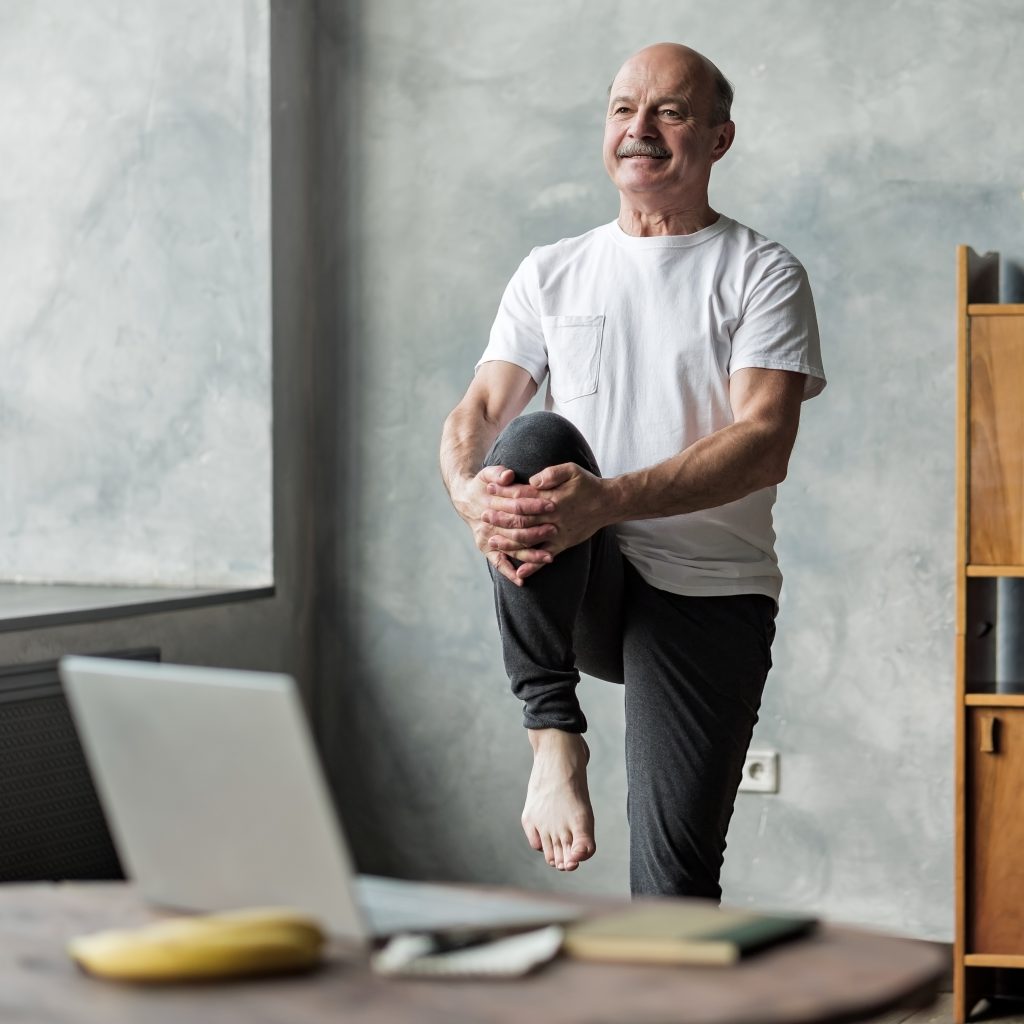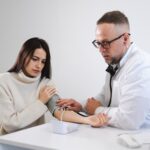August 26, 2021
How To Prevent a Stroke
Having a stroke is preventable. Yet, someone in the U.S. dies from a stroke every four minutes, according to the CDC. Up to 80% of strokes can be prevented by making healthy lifestyle changes and working closely with your doctor to reduce your risk.
Continue reading to learn more about stroke causes and prevention, and signs that it’s time to see your doctor for treatment.
What Is a Stroke?
A stroke occurs when blood supply to a part of your brain is reduced or cut off. This prevents brain tissue from receiving oxygen and nutrients and causes brain cells to die within minutes.
Dr. Terrence Feehery, a family medicine physician with Healthcare Associates of Texas emphasizes, “Patients who have hypertension, diabetes, and high cholesterol are most at risk to have a stroke. Smoking is also a significant risk factor for stroke.”
Serious complications associated with stroke include memory loss, difficulty talking, and paralysis. A stroke is considered a medical emergency, as it may lead to brain damage and death.
What Are the Different Types of Strokes?
There are four types of stroke: ischemic, embolic, hemorrhagic, and transient ischemic attack (TIA).
An ischemic stroke occurs when an artery becomes narrowed or blocked that results in reduced or stopped blood flow. Reduction in blood flow usually is caused by blood clots or fat deposits stuck inside brain arteries.
“Embolic stroke is the most common type of stroke. The most common type of stroke is an occlusion of a blood vessel in the brain,” says Dr. Feehery.
A hemorrhagic stroke occurs when an artery in the brain leaks or becomes ruptured due to factors including chronic high blood pressure and aneurysms. Trauma to the brain, such as that which occurs during a vehicle accident, may also cause a hemorrhagic stroke.
Dr. Feehery explains, “Hemorrhagic stroke, or brain bleed, is usually more dangerous because it can cause a very large area of damage in the brain and lead to increased pressure around the brain.”
A TIA—also known as a ministroke—occurs when blood supply to your brain gets temporarily reduced or stopped for up to a few minutes. A TIA shares cause with ischemic strokes and don’t usually result in permanent damage.
What Are the Signs of Stroke, and What Does a Stroke Feel Like?
A stroke usually isn’t painful but causes a variety of sudden, awkward, and uncomfortable symptoms. Here are warning signs that Dr. Feehery says to be aware of:
- Facial droop
- Arm weakness or numbness
- Difficulty speaking
Other signs to watch out for include:
- Difficulty walking
- Difficulty maintaining balance and coordination
- Sudden dizziness
- Difficulty seeing with one or both eyes (e.g., blurred, blackened, double vision)
- Paralysis or numbness on one side of the face or body
- Sudden, severe headache that may get accompanied by vomiting
What Happens When You Have a Stroke?
Familiarizing yourself with the above signs and symptoms is the best way to determine whether you are having a stroke.
When a stroke happens, “A blockage forms in an artery in the brain causing neurologic symptoms that can vary but depends on the location of the stroke,” Dr. Feehery explains.
When you have a stroke, you may have difficulty smiling or moving one side of your face. A stroke may affect your ability to talk and cause you to slur your speech or say sentences that don’t make sense. You may also have difficulty raising one arm or keeping it upright.
Treatment for a stroke is usually quick and timely due to how a stroke is considered a medical emergency. Your doctor will check your vitals, run a series of diagnostic tests, and treat you accordingly based on whether you have had an ischemic or hemorrhagic stroke.
If you’ve had an ischemic stroke, the goal is to restore blood flow to your brain as quickly as possible. Treatment usually focuses on dissolving or removing the blood clot causing the stroke.
If you’ve had a hemorrhagic stroke, the goal is to control bleeding and reduce pressure in your brain. Treatment may involve medications, a blood transfusion, and/or surgery.
What Causes a Stroke?
Many risk factors for a stroke are controllable and preventable. Some non-modifiable risk factors exist, including being male, African American, 55 years of age or older, or having a personal or family history of stroke or heart attack.
According to Dr. Feehery, the most common causes of a stroke are, “high blood pressure, smoking, diabetes, and high cholesterol. “
Other controllable and preventable risk factors of stroke include:
- Being overweight or obese
- Physically inactivity, sedentary lifestyle
- Heavy alcohol use, or binge drinking
- Obstructive sleep apnea
- Cardiovascular disease
- COVID-19 infection
- Illicit drug use, particularly stimulants like cocaine and methamphetamine
- Use of estrogen hormone therapies, including birth control pills
Can You Prevent a Stroke?
The key to stroke prevention is familiarizing yourself with its controllable risk factors and taking steps to implement a series of healthy lifestyle behaviors that reduce your risk.
Dr. Feehery simply suggests,
- Quit smoking
- Control blood pressure
- Control cholesterol
- Control blood sugar if diabetic
- Treat sleep apnea
- Maintain a healthy weight
- Exercise (cardiovascular exercise 30 minutes 4-5 times per week)
Other effective ways to prevent a stroke include:
- Achieve a healthy body mass index (BMI) between 18.5 and 24.9.
- Limit your alcohol intake and avoid binge drinking on any occasion. The CDC recommends that men have no more than two drinks per day and that women have no more than one drink per day.
- Reduce your risk for diabetes and heart disease by eating a healthy, balanced diet, and optimizing your vitamin D levels. If you already have diabetes or heart disease, work with your doctor to manage and control these conditions as best as possible.
- Reduce your exposure to people who have COVID-19 to avoid infection.
- Avoid illicit drug use and seek professional treatment for physical dependence and addiction.
- Use non-estrogen hormone therapies or using non-hormonal birth control methods.
- Your doctor can review your medical history, talk to you about your lifestyle, and help you identify and address any factors that may be putting you at risk for stroke. For instance, your doctor may work with you to improve your diet, which can also help you reduce your risk for diabetes and heart disease.
Are There Foods That Prevent Stroke?
The foods you eat play a critical role in your overall health. Certain foods can help fend off many severe diseases and medical conditions—including stroke.
Foods that prevent stroke include whole, nutritious foods, including fruits, vegetables, whole grains, legumes, nuts, seeds, low-fat dairy, and lean protein sources. Stay away from processed industry foods that lack nutrients and that contain high amounts of sugar and preservatives.
Foods to include in your stroke prevention diet include:
- Dark leafy greens, including kale, spinach, and Bok choy
- Fruits, particularly apricots, avocados, and watermelon, which contain nutrients shown to reduce stroke risk
- Vegetables, including potatoes and Swiss chard
- Nuts and seeds, including cashews, pumpkin seeds, and flaxseeds
- Omega-3s, including salmon, mackerel, and walnuts
- Whole grains, including quinoa, brown rice, and oatmeal
- Legumes, including lentils, black beans, and pinto beans
- Low-fat dairy, including Greek yogurt and cottage cheese
- Sources of lean protein, including turkey, chicken, and eggs
DISCLAIMER
The information featured in this site is general in nature. The site provides health information designed to complement your personal health management. It does not provide medical advice or health services and is not meant to replace professional advice or imply coverage of specific clinical services or products. The inclusion of links to other web sites does not imply any endorsement of the material on such websites.
Ready to become your healthiest self?
Get tips delivered to your e-mail inbox every month. Let’s get happier and healthier together!




